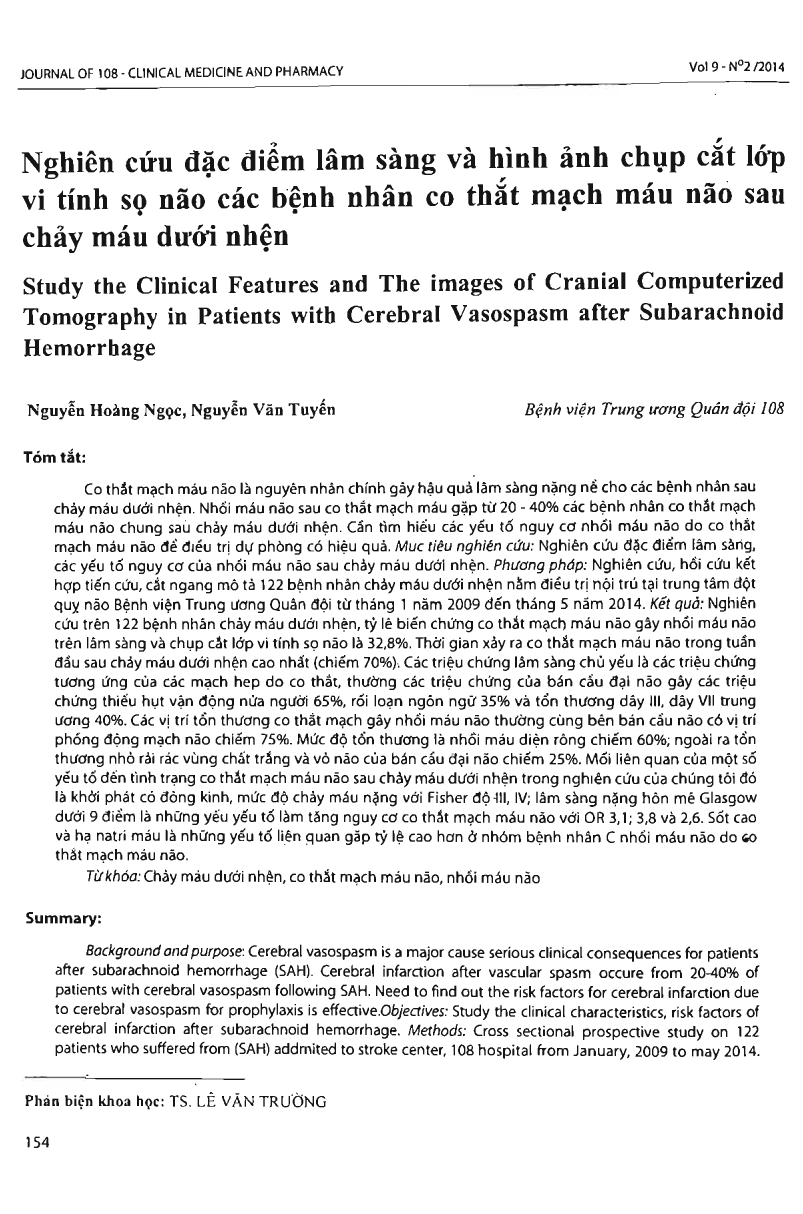
Background and purpose: Cerebral vasospasm is a major cause serious clinical consequences for patients after subarachnoid hemorrhage (SAH). Cerebral infarction after vascular spasm occure from 20-40 percent of patients with cerebral vasospasm following SAH. Need to find out the risk factors for cerebral infarction due to cerebral vasospasm for prophylaxis is effective.objectives: Study the clinical characteristics, risk factors of cerebral infarction after subarachnoid hemorrhage. Methods: Cross sectional prospective study on 122 patients who suffered from (SAH) addmited to stroke center, No.108 Military Hospital from January, 2009 to may 2014. Results and conclusions: The study on 122 patients with SAH, the rates of cerebral vasospasm causing cerebral infarction was 32.8 percent. Time happens cerebral vasospasm in the first week after SAH (70 percent). The main clinical symptoms correspond with the narrow vessels spasm. Hemiplegia occures 65 percent of patient, speech disorders is 35 percent. The location of cerebral infarction is ipsilateral hemisphere of the aneurysms, accounted for 75 percent. The large infarction accounted for 60 percent; and the small lesions in white matter and cortex of the cerebral hemispheres account for 25 percent. The relationship of some factors to the condition cerebral vasospasm after SAH is that the onset of epilepsy, severe bleeding level with Fisher grade III, IV; Glasgow score is less than 9, they are major factors that increase the risk of cerebrovascular spasm with OR of 3.1, 3.8 and 2.6. High fever and hyponatremia are higher proportion in the patients with cerebral vasospasm.
- Đăng nhập để gửi ý kiến
